
Beverage logistics: how does Coca-Cola get into the bottle and to the consumer?
Economics & Logistics
At Coca-Cola, production is safe, clean and automated. And these high standards apply for the deliveries too. This is why the company relies exclusively on heavy-duty distribution trucks from Mercedes-Benz.
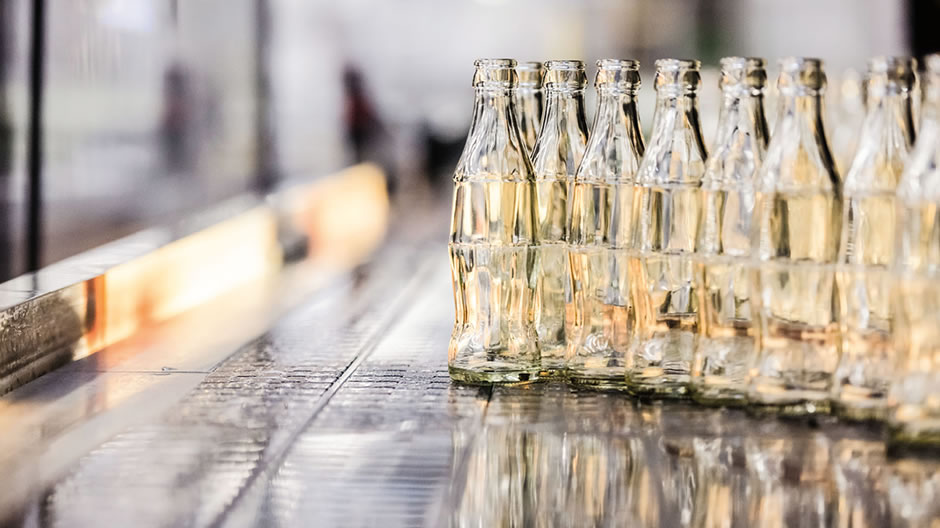
Sparkling clean. Returned, washed, ready for their next "tour of duty": up to 46,000 bottles are filled every hour in Hildesheim.
These sounds belong to the soundtrack of summer: the opening of the fridge door, the clinking of glass bottles, the hissing of the cap being taken off. Ice-cold Coca-Cola in the little 0.2-litre bottle is an icon. "Mercedes-Benz Transport" made its way to the source and then accompanied the little bottle on its journey. And it begins, for example, in Hildesheim. Here is one of the 16 Coca-Cola production locations in Germany. The approximately 500 employees of the plant ensure that full bottles leave the five production lines around the clock. The goal this year: to fill a million litres every day.
The gigantic production hall is full of sounds: buzzing, clanging and tinkling. The conductor of this orchestra: Alexander Haferkamp. The 35-year-old production manager must have everything in his sights: have enough empty bottles been delivered? How long will the syrup last? For what size bottles do the production lines have to be prepared right now? All the machines are monitored, malfunctions and anomalies are precisely recorded. Mechanics stand at the ready in order to keep downtimes to a minimum. For the master brewer and his team, no day is the same as another.
Precisely coordinated processes.
However, for the little Coke bottle the process is indeed always the same. After their delivery the bottles and crates are separated, cleaned and sorted. Two employees remove differently-shaped bottles from the conveyor belt. The following step sees any foreign objects there may be removed from the bottle. The journey continues to the next station: the bottle washing system. "At 80 degrees Celsius, the bottles are immersed successively in two different leach solutions and are then rinsed out with clear water. After this the bottle is absolutely clean", says Haferkamp. Now it's the "inspector's" turn: this is a device that scans bottle by bottle, and no flaw or damage, no matter how small, escapes its attention.
Only then does the decisive moment come: the coke gets put into its bottle. Before this, the beverage is mixed in some unassuming tanks in a neighbouring hall. The mixture itself is made from drinking water, syrup – the recipe is a closely-guarded secret – and of course carbon dioxide.
The reusable filling line can handle between 40,000 and 46,000 bottles per hour. "It is the heart of the production line and sets the pace: the output of the other production devices is adjusted to suit its specific filling capacity", says Production Manager Haferkamp. Depending on the speed, for example, eleven bottles per second receive their labels and crown caps before they go through a final quality control and land in the clean yellow crates.
This article contains additional material (videos, images and reports etc.) for registered RoadStars members. In order to experience the article to the full, you need to log in with your RoadStars account or register for one free of charge.
Become a RoadStar and gain access to exclusive content and campaigns!
Login for RoadStars members
Not yet a member? Join RoadStars now
Obtain exclusive access to exciting events and activities which only RoadStars can offer.
Join RoadStars"The customer expects to receive the right goods, in the right quantity, at the right time and of the right quality. That is why a well-oiled delivery logistics is extremely important."
– Francis Driessen, Network Logistics Manager for the Achim and Lüneburg plants
The bottles of Coca-Cola now leave the production hall in groups of 40 crates. By this time, a bottle has been on the move for one hour on the Hildesheim conveyor belts. From the palletizing plant the journey takes the beverage to the warehouse and from there directly to customers and the distribution centres in the region.
"124 days without a work-related accident. The longest period without an industrial accident: 370 days." The plaque at the entrance of the distribution centre in Achim near Bremen shows: at Coca-Cola Germany safety is taken very seriously. No wonder then that most of the fleet of 17 vehicles consists of Mercedes-Benz trucks. "The customer expects to receive the right goods, in the right quantity, at the right time and of the right quality. That is why a well-oiled delivery logistics is extremely important.“, says Francis Driessen, Network Logistics Manager for the Achim and Lüneburg plants. A glance into the warehouse inaugurated in 2017 confirms this. Everything is kept meticulously clean and tidy. However, should anything be broken, the shards are whisked away in no time.
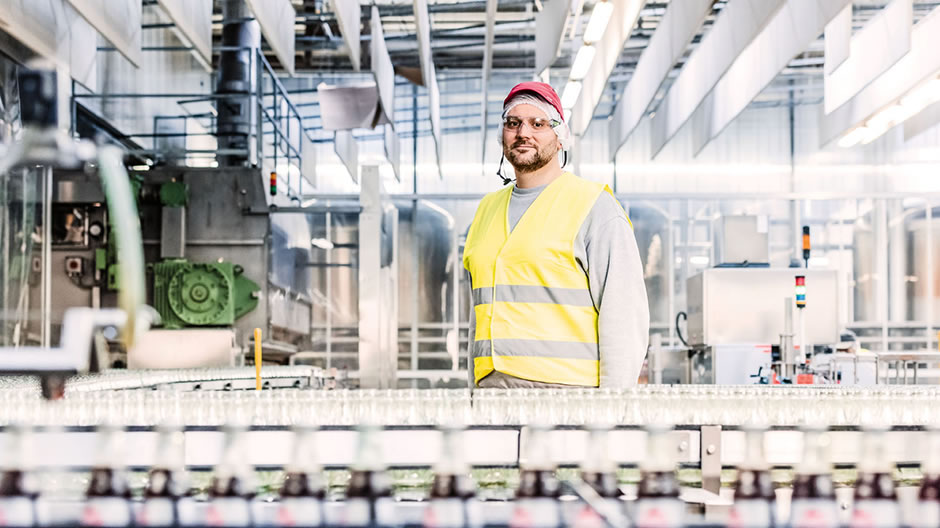
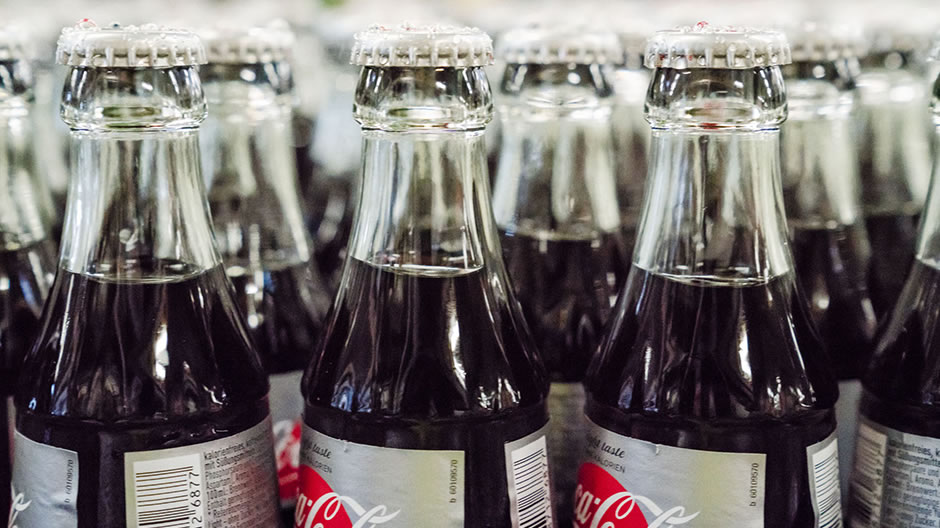
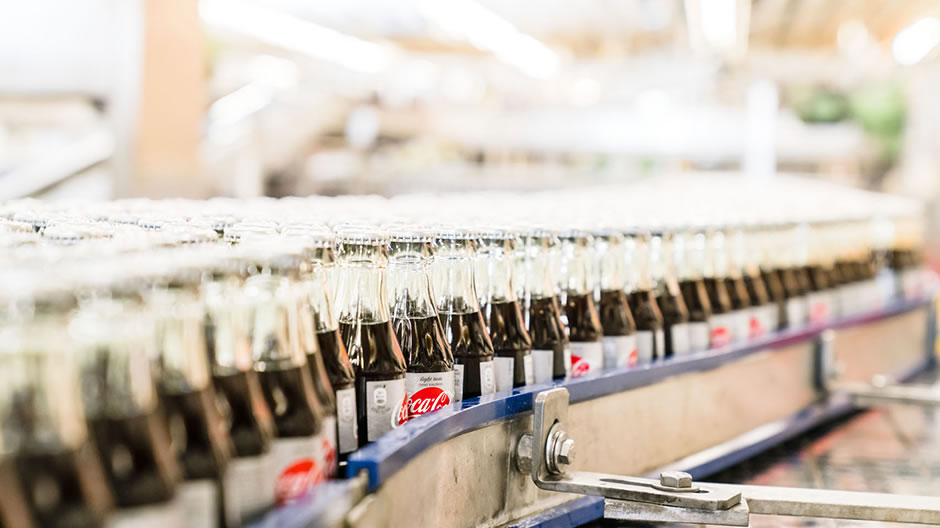
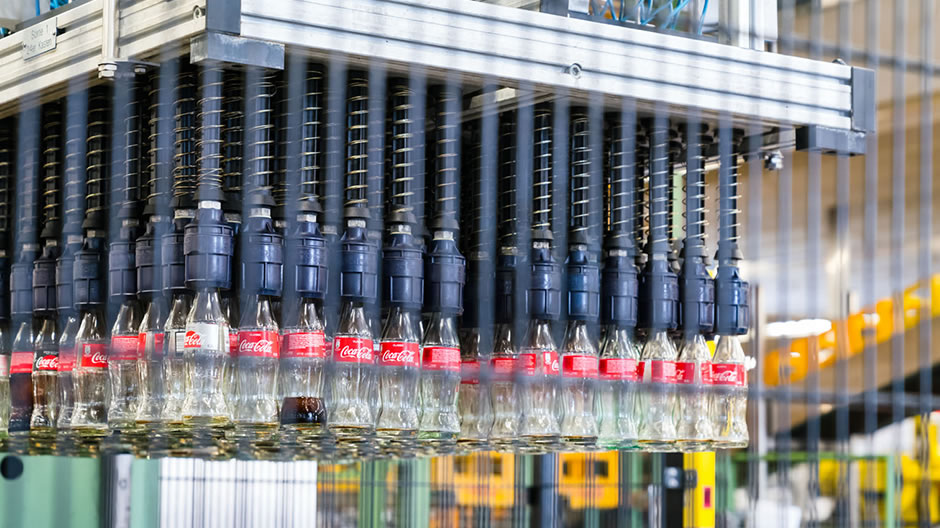
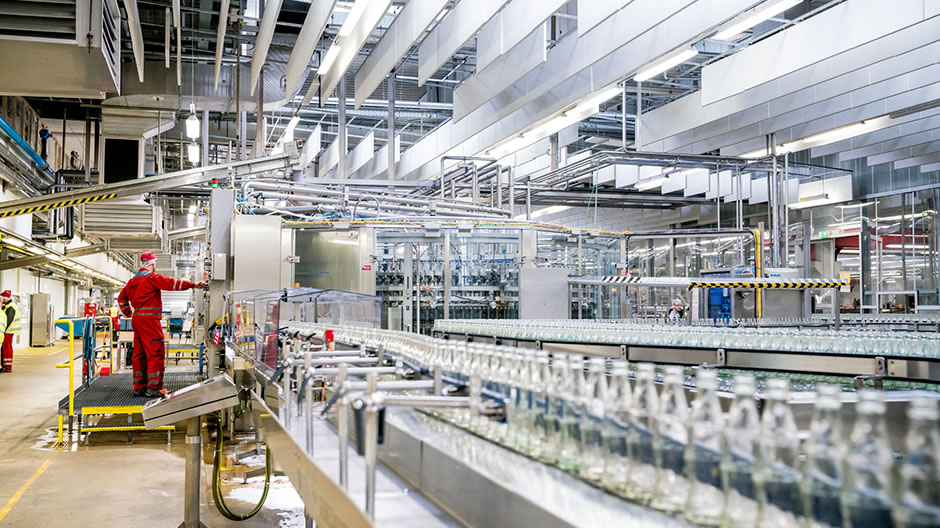
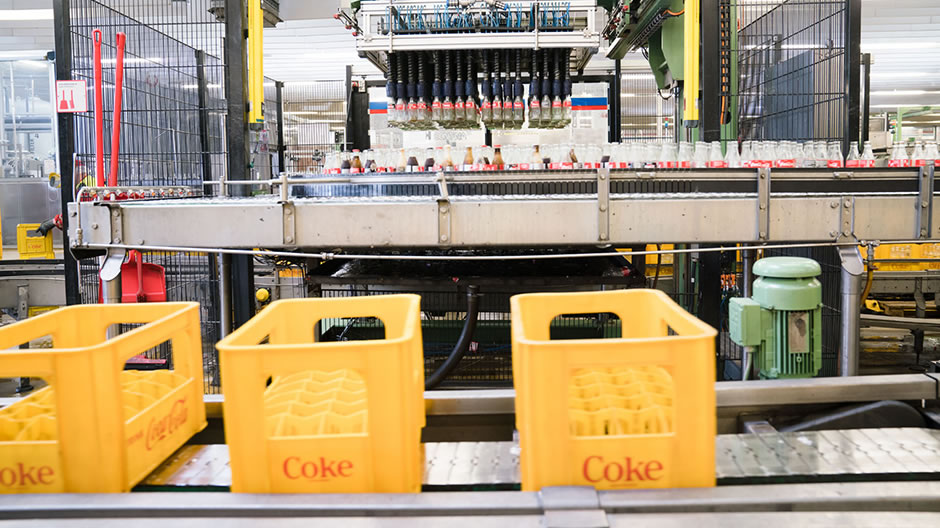
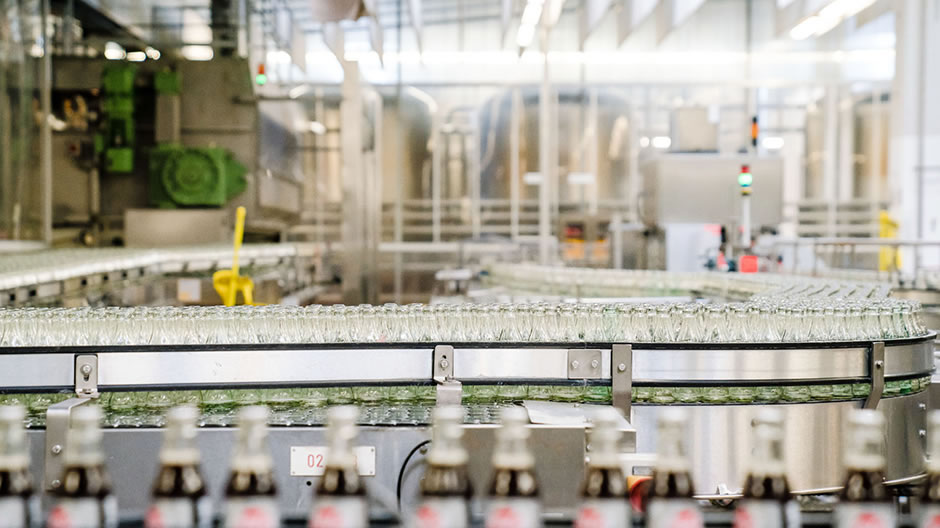
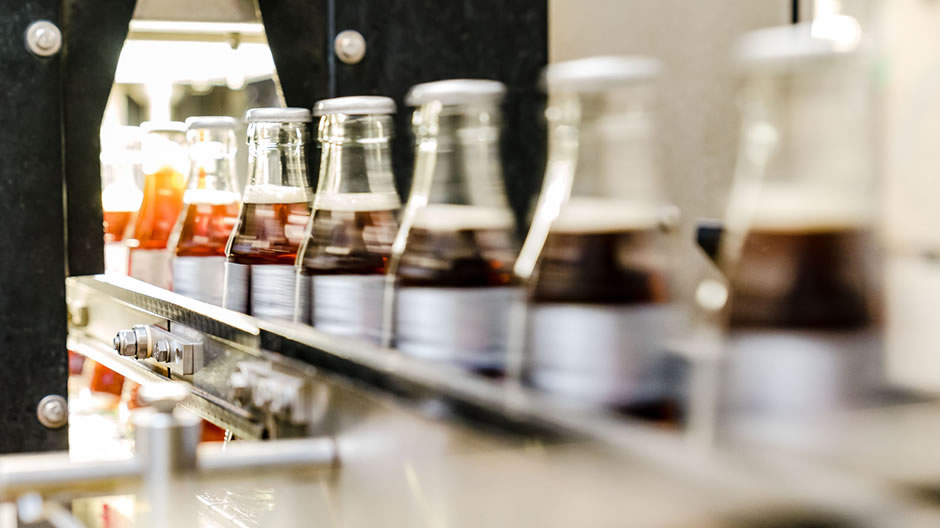
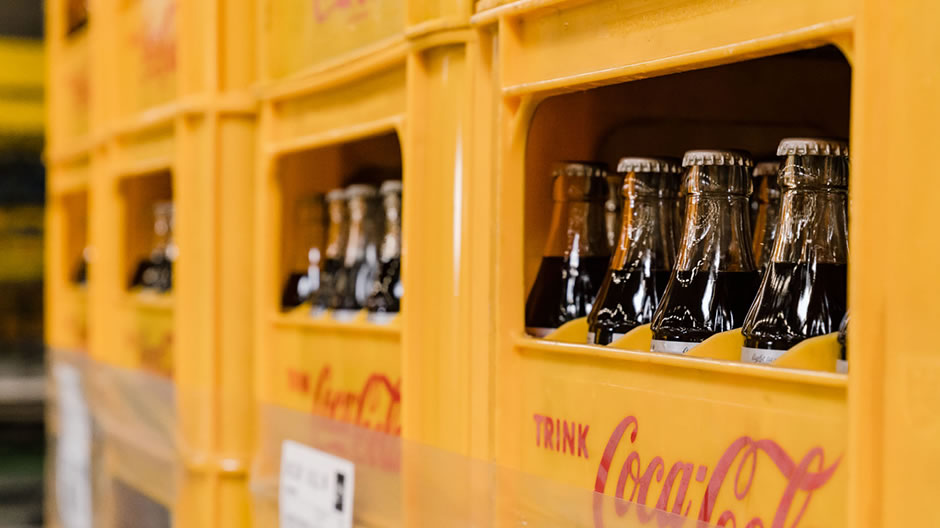
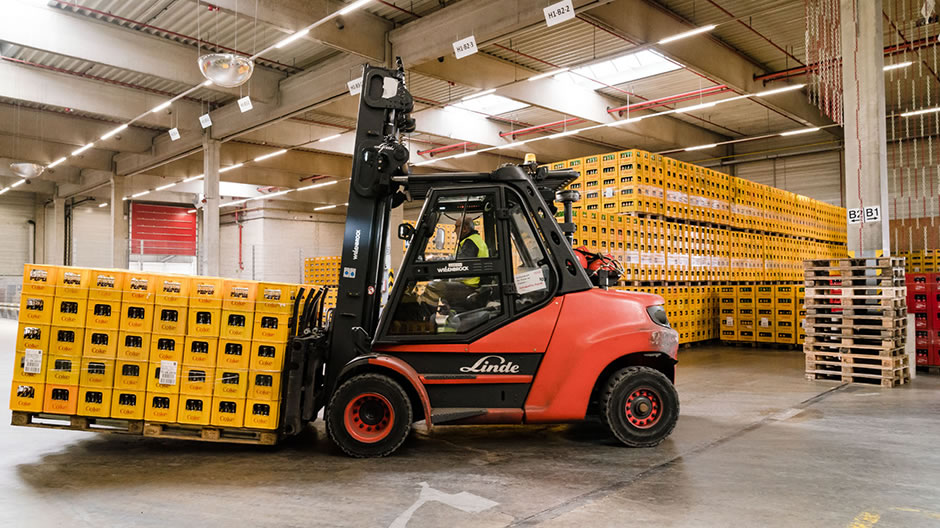
From Achim and into the region, reliably.
From 11 a.m., orders for the following day are compiled paperlessly using an electronic warehousing management system. The warehouse employees are on the move with ten order pickers so that the customers receive the exact products they want from the 300-odd on offer. A worker moves up to 18 tons per shift; this is equivalent to about two truckloads. The vehicles with their completed loads are parked in front of the building. From there, the 17 delivery trucks swarm out into the surrounding region at 4 a.m. the following morning.
Delivery driver Christian Walter opens the sliding tarpaulin of his bright red Antos 2540. Then he gives forklift driver Siegfried Schmülling a sign. Siegfried Schmülling drives a so-called triple forklift. It can carry up to three palettes at the same time. This can quickly add up to a weight of three and a half tons. Where each pallet gets put aboard the truck depends on the conditions on site at the customer's premises: is there a ramp? How big is the order? Does the customer have a forklift of their own or will it be necessary to unload with the small hand-operated forklift that is always on board?
The customer base includes large-scale customers such as retail chains and restaurants such as the Hafenkantine inn, Bremerhaven. But the small kiosk that regularly orders the minimum quantity of litre bottles is also supplied.In such cases the driver sometimes collects small cash payments. This broad spectrum is precisely what Christian Walter enjoys. The 28-year-old driver has been working at Coca-Cola for four years and has been a driver in the "red fleet" for almost two years.Mainly in the city centre of Bremen – that is 70 kilometres per tour with many stops.
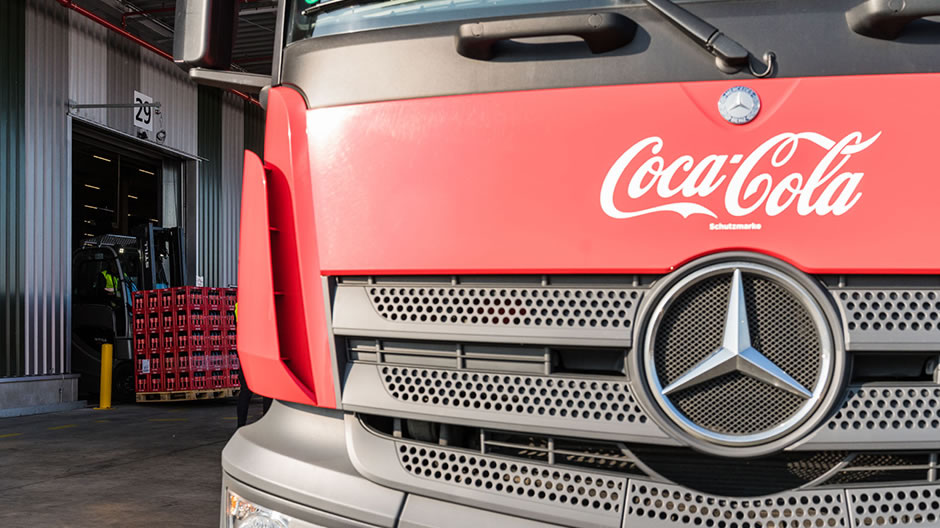
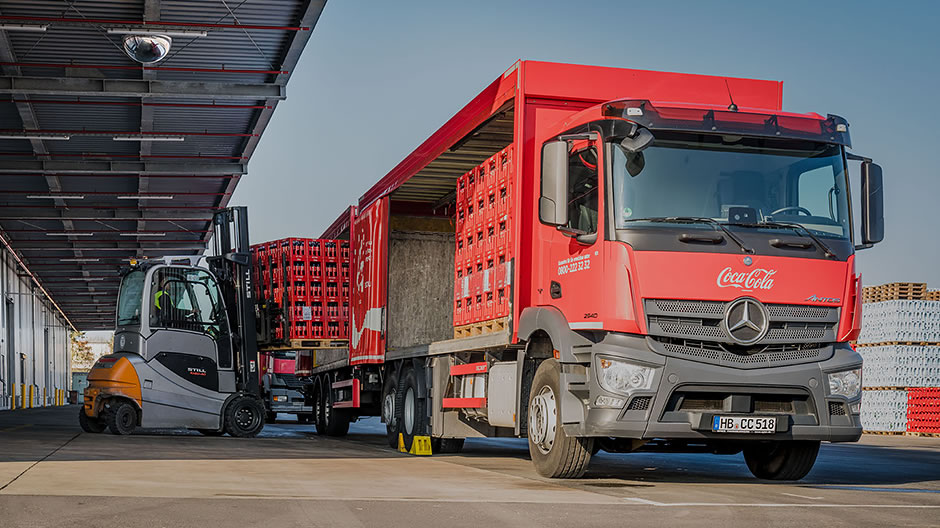
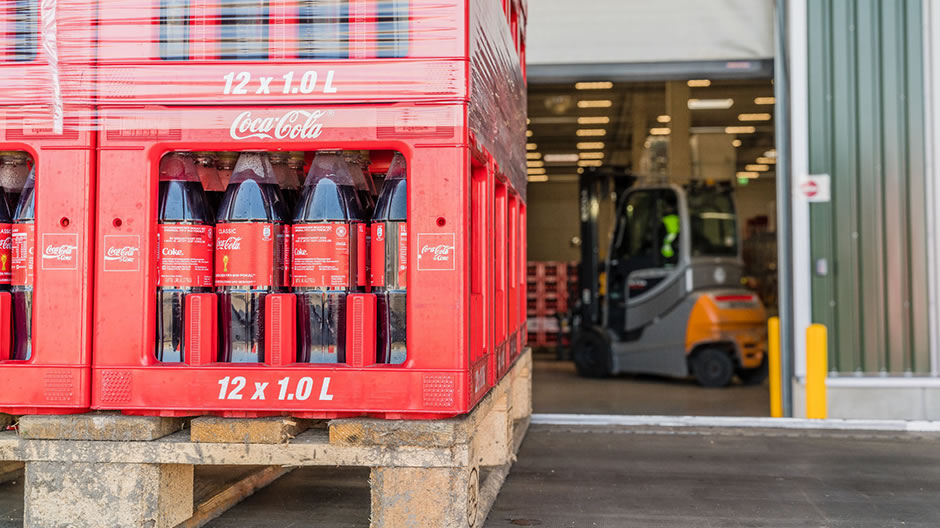
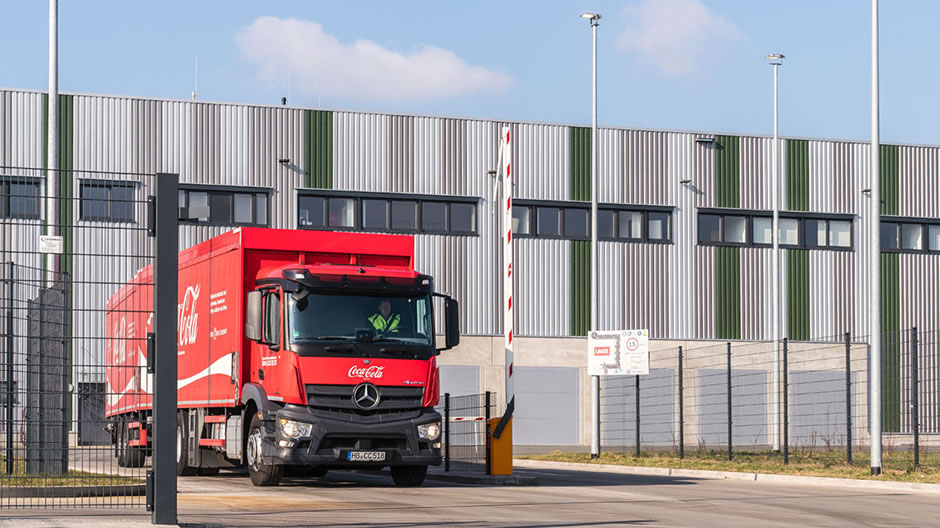

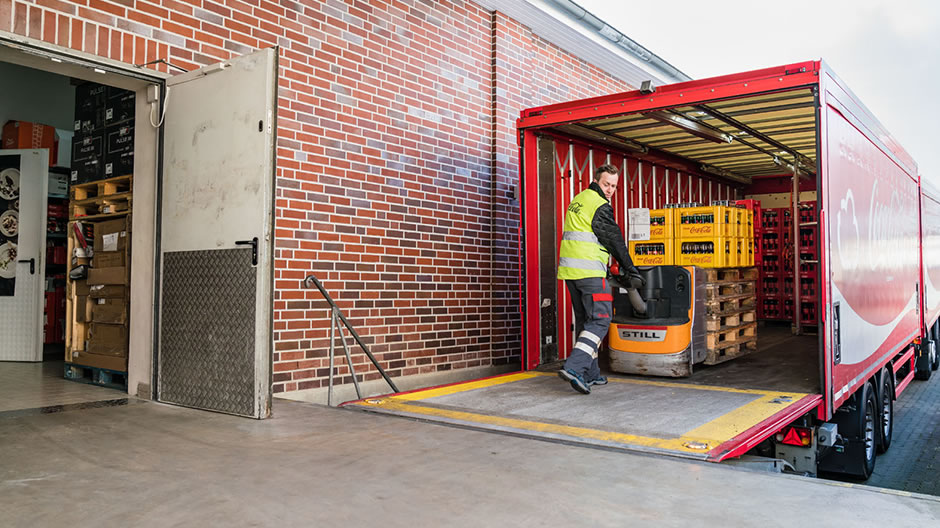
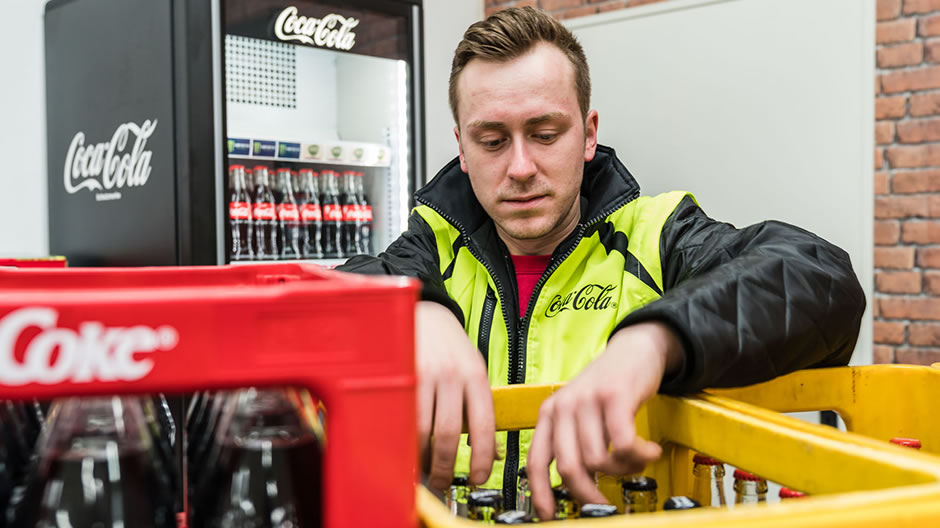
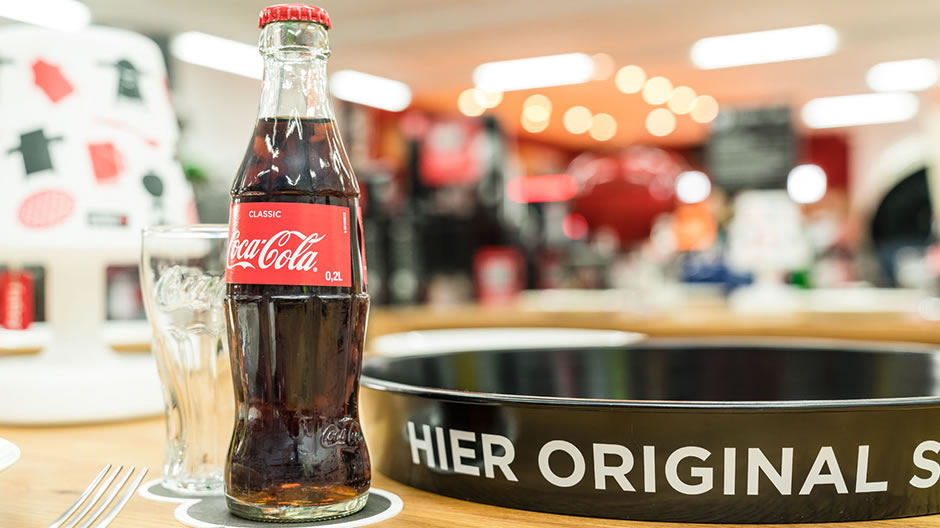
Well equipped for the busy season.
Ideal terrain for his Antos with Lane Keeping Assist and Active Brake Assist 3 on board. Which equipment features does he not want to do without - apart from the assistance systems? "Seat heating and climate control", says Walter. He can always rely on them when the going gets tough in the busy season and the workload sky-rockets. And then it is either very hot or exceedingly cold: Easter and Christmas are the times of the greatest turnover. And summer, too, of course. Because that's when the grills are fired up and the drinks are cooled, even in Northern Germany.
Twelve yellow crates with 0.2-litre bottles of Coca-Cola are for Grillfeuer BBQ today. These BBQ enthusiasts don't just sell high-quality grills, they also offer cooking, barbecue and grill courses. And the classic beverage is simply what goes best with these things: ice-cold Coca-Cola from a glass bottle.
Photos: Christian Schmid
Video: Martin Schneider-Lau




Comment
Please log in to post a comment.
6 comments
Man lernt das der LKW Fahrer wenig fährt , aber viel arbeiten muss .
Eigentlich schade mit einem so schönen Antos .
Man lernt das der LKW Fahrer wenig fährt , aber viel arbeiten muss .
Eigentlich schade mit einem so schönen Antos .